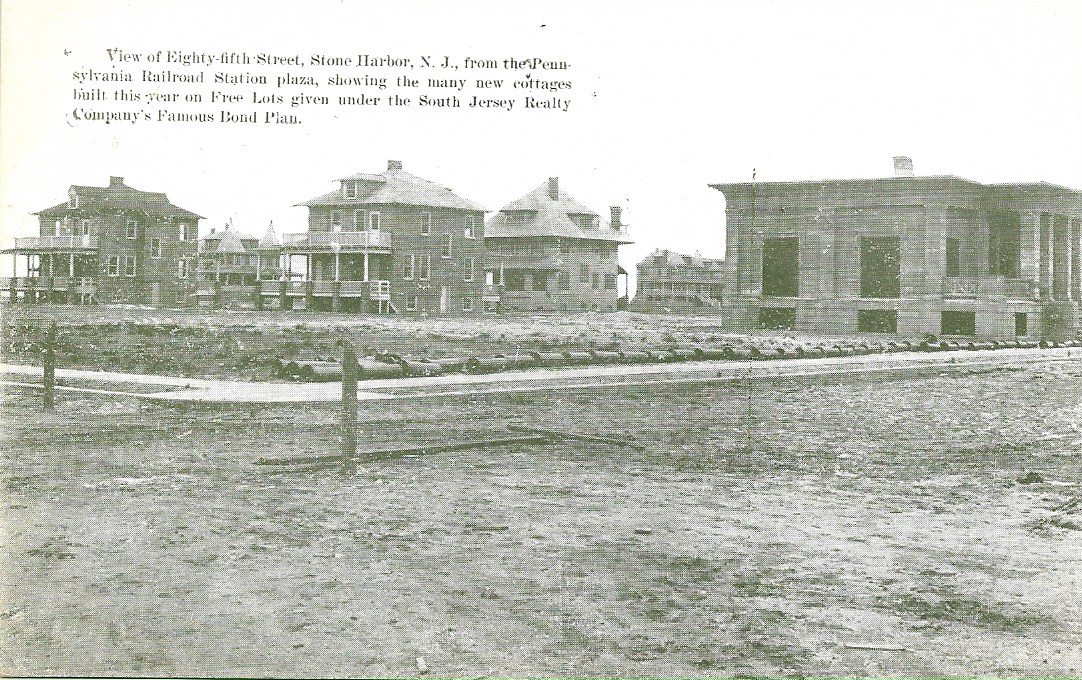
THE BEGINNING OF OUR STORY: A vintage post card gives us a starting point for another article, this time primarily featuring a grand and rather unique “Concrete House” that after 115 years still stands proudly in Stone Harbor, New Jersey. The published post card scene provided above, while not specifically mentioning a “concrete house”, does in fact show a scene that we know includes the first structure made entirely of concrete that was built in Stone Harbor in 1909. Please note that the building which we are focusing on herein is only partially visible and can be seen on the far right side of this image. Clearly we can see that the external appearance or architectural style of the concrete house is substantially different from all the other recently constructed cottages that surround it. In fact, we have come to learn that this original Stone Harbor concrete house is patterned after the Egyptian-Revival aesthetic style of architecture which during this time was one of the styles that permeated all aspects of the arts, from the decorative to architecture. Furthermore, this post card is the only one that I know that shows this particular Stone Harbor concrete house. The informational caption on the face of this post card fixes the actual location and states the following: “View of Eighty-fifth Street, Stone Harbor, N. J., from the Pennsylvania Railroad Station plaza, showing the many new cottages built this year on Free Lots given under the South Jersey Realty Company’s Famous Bond Plan”. This post card and numerous others like it very early on were an integral part of a commercial venture and initiative that the Risley brothers created through an imaginative advertising plan and involving promoting the building of a “new” community on Seven Mile Island called Stone Harbor. In addition, two other known concrete houses have been built in Stone Harbor many years ago and this account will conclude with some specific details and information about them as well.
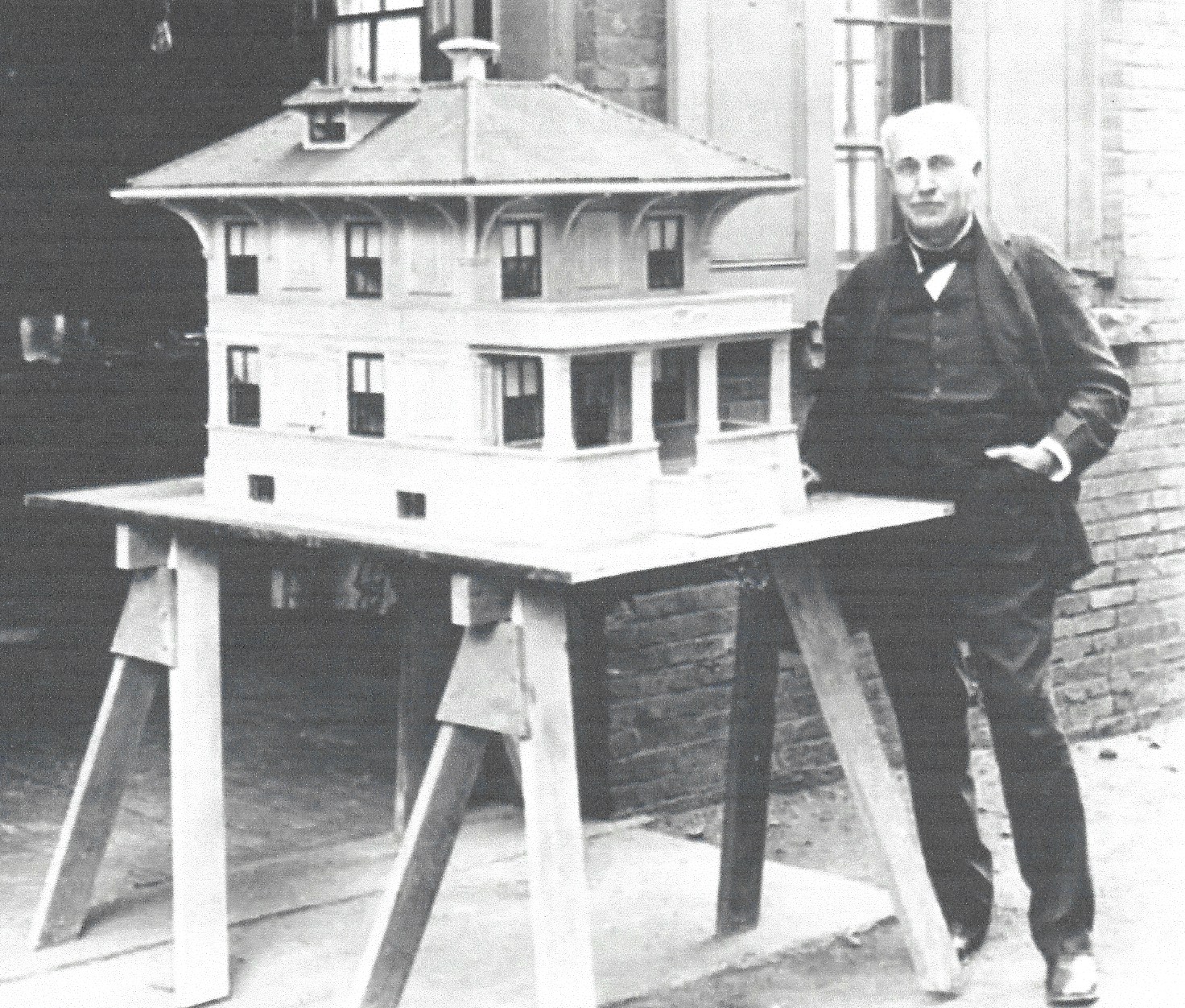
SOMETHING EXTRA: However, before proceeding and as an important side note, it is worth sharing that something interesting was occurring in both Europe as well as America during the period from 1880 to 1930. Some might even refer to this as a phenomenon of sorts. We first need to turn our attention to a well-known person living in the suburban township in Essex County in northern New Jersey called West Orange. Namely, Thomas Alva Edison, the so-called “Wizard” of Menlo Park, has been hard at work experimenting and creating many new and remarkable things in his scientific laboratory. Shown above, we see Edison standing beside a large model of one of his innovative concrete houses. While not among his most famous of creations or inventions, it is safe to say that Edison was intent on figuring a viable way to mass-produce and build houses entirely out of concrete. We know that Edison had patents pending that in his words described the process as follows: “The object of my invention is to construct a building of a cement mixture by a single molding operation, all its parts, including the sides, roofs, partitions, bath tubs, floors, etc., being formed of an integral mass of a cement mixture”. Edison would go on to contend that there would be numerous benefits for such concrete homes, such as being fireproof, insect proof, easy to clean and they were built at a very affordable $1,200 for the building materials (the cost of the concrete) per house. Concrete has also proven to be a very durable building material when it comes down to natural disasters and extreme weather-related events.
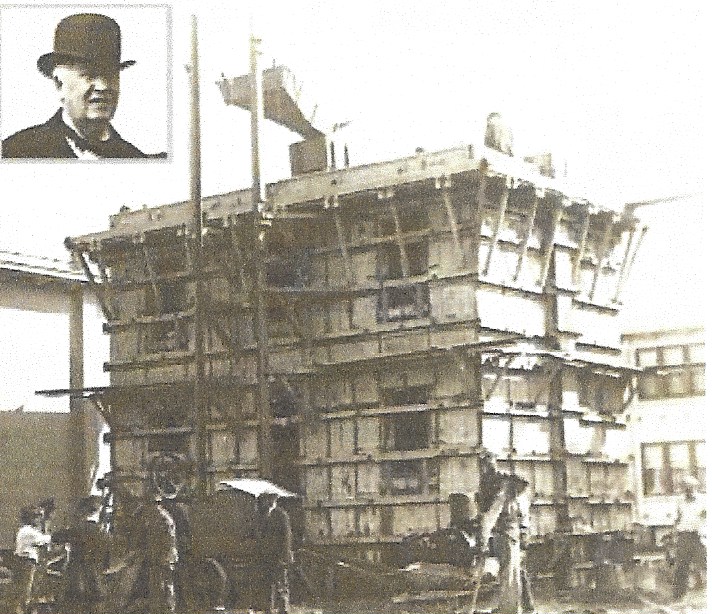
Despite a general lack of interest on the part of the public and the very high associated costs for the many forms and materials needed by the builders, Thomas Edison did however succeed in building a few concrete houses in New Jersey including this very structure (see photo above) with forms in place being poured at a site in Montclair, New Jersey. Subsequently, small outfits or lesser equipped building companies would be costed out of such projects and generally only the larger companies could afford the significant outlay of money for the required materials to form and build the concrete houses. While poured concrete houses were not necessarily embraced and accepted back in the early 1900s, Edison was nevertheless what we might call an “outlier” and as a visionary we would even say that he was “ahead of his time” in many areas of endeavor including the relatively new concept of concrete houses. The reason being, that today, a hundred plus years later, concrete houses are being created with sophisticated 3D printers – but only with much enlarged versions of printing devices, driven by computers. “For printing at the building scale, a computer-controlled robot squeezes out concrete through a mobile nozzle, like toothpaste from a tube, building up wall and slabs layer after layer.” We know that in 2018 a family in Nantes, France currently resides in what has been claimed as the first inhabited 3D-printed concrete house in the world. Now isn’t that just incredible? One can only imagine how Thomas Edison most likely would have marveled with delight upon seeing today’s 3D technology with all it versatility and countless capabilities and applications.
I share this information about Thomas Edison with you so that as a backdrop you know that even while the Stone Harbor concrete house on 8514 Pennsylvania Avenue was not built by his company, concrete houses nevertheless were definitely in the news at that time and being produced in numerous other places including a serious undertaking in Gary, Indiana. In fact, today there is even what is known as the Polk Street Concrete Cottage Historic District in Gary, Indiana where 4 concrete houses in a residential section were built starting in 1910 and serve as examples of the Edison Concept Houses that were designed, patented and promoted by Thomas Edison. These specific homes are listed on the U.S. National Register of Historic Places in Lake County, Indiana as well. Some of the concrete houses produced in the early 1900s are still standing and have survived the test of time. This is exactly the case regarding the first concrete house in Stone Harbor that is featured in this account. So at this point, let us direct our attention to that unique and earliest Stone Harbor “Concrete House”.
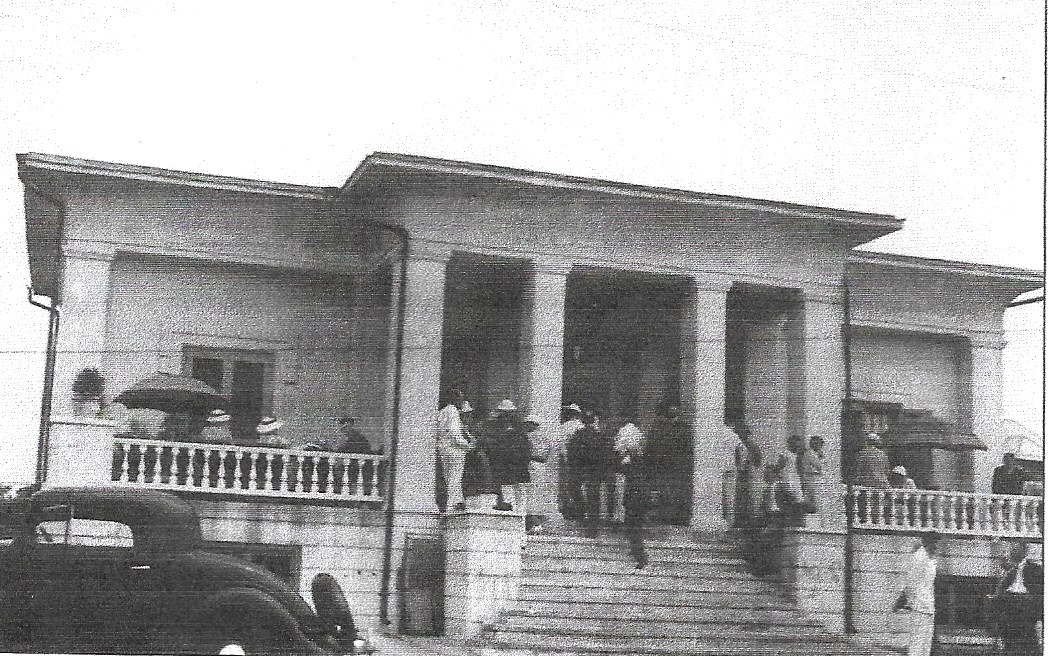
BACKGROUND ABOUT THE HOUSE: The photo illustrated above showing the concrete house 27 years after its completion was taken in August 1936 on the occasion of a wedding reception. This image is one of just a few known early photographs showing the unique concrete house in Stone Harbor. Many guests can be seen socializing and enjoying the special occasion on a the 50 foot veranda which in essence was an open porch or sometimes called a portico, partially covered, providing an entrance and attached to the front exterior of the house.
As far as the history of this celebrated concrete house is concerned, we know that it was built and completed on February 25, 1909. We have also learned that there have been a total of 9 owners on record of this Concrete House situated at 8514 Pennsylvania Avenue. This structure was one of the earliest houses in Stone Harbor and Gilbert Smith was the first buyer. Apparently it was a so-called promotional or “sample” concrete house for quite some time, but most interestingly we have learned that for 20 years the house was not even occupied. Charles Diller purchased the property on November 4, 1925 and shortly thereafter moved in with his family. By September 29, 1939, the surviving widow K. Diller sold said house to the Borough of Stone Harbor. On November 8, 1941 the Borough sold the property to its new owner with the last name being Hare. Five years later on July 6, 1946 the Hare’s sold the house to a party with the name of Close. Twenty some years hence and on October 23, 1967, the Close family sold the property to someone bearing the last name of Lang. The house once again changed hands when the Lang’s sold it to the Collister family on February 24, 1972. Collister then only a year later on March 5, 1973 sold to someone with the last name of Fitzpatrick where it remained their property for 20 years. Finally, and on July 9, 1993, Fitzpatrick sold the concrete house to the current owner/resident, Joseph Moran and Family of Philadelphia.
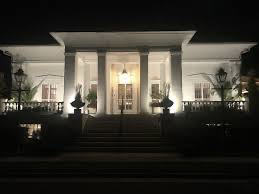
PRESENTLY: Here we present a lovely night-time photo. Originally the concrete house had 3 bedrooms, a grand living room with an 18-foot high ceiling and something most Stone Harbor houses do not have – a full basement. In fact, as far as the basement is concerned, we have learned that actually there were no footers or any foundation per se, meaning the house was literally built directly on the sand much like a free-standing or self-supporting structure. This stately single family house now popularly referred to as “The White House”, has 4,500 sq. ft. of living space since major renovations have occurred since 2008 and in 2010. Our understanding is that a second floor was built and 2 more bedrooms were made available. The spacious basement now consists of 2,000 sq. ft. of usable space. Additionally, we have learned that “The White House” has been officially listed as a “Vintage House” as part of the Vintage Homes Program of Stone Harbor. In fact, the Stone Harbor Museum endeavors to encourage the preservation of the unique heritage of Stone Harbor. Therefore it can be said that 8514 Pennsylvania Avenue is formally recognized and celebrated as a “certified” house.
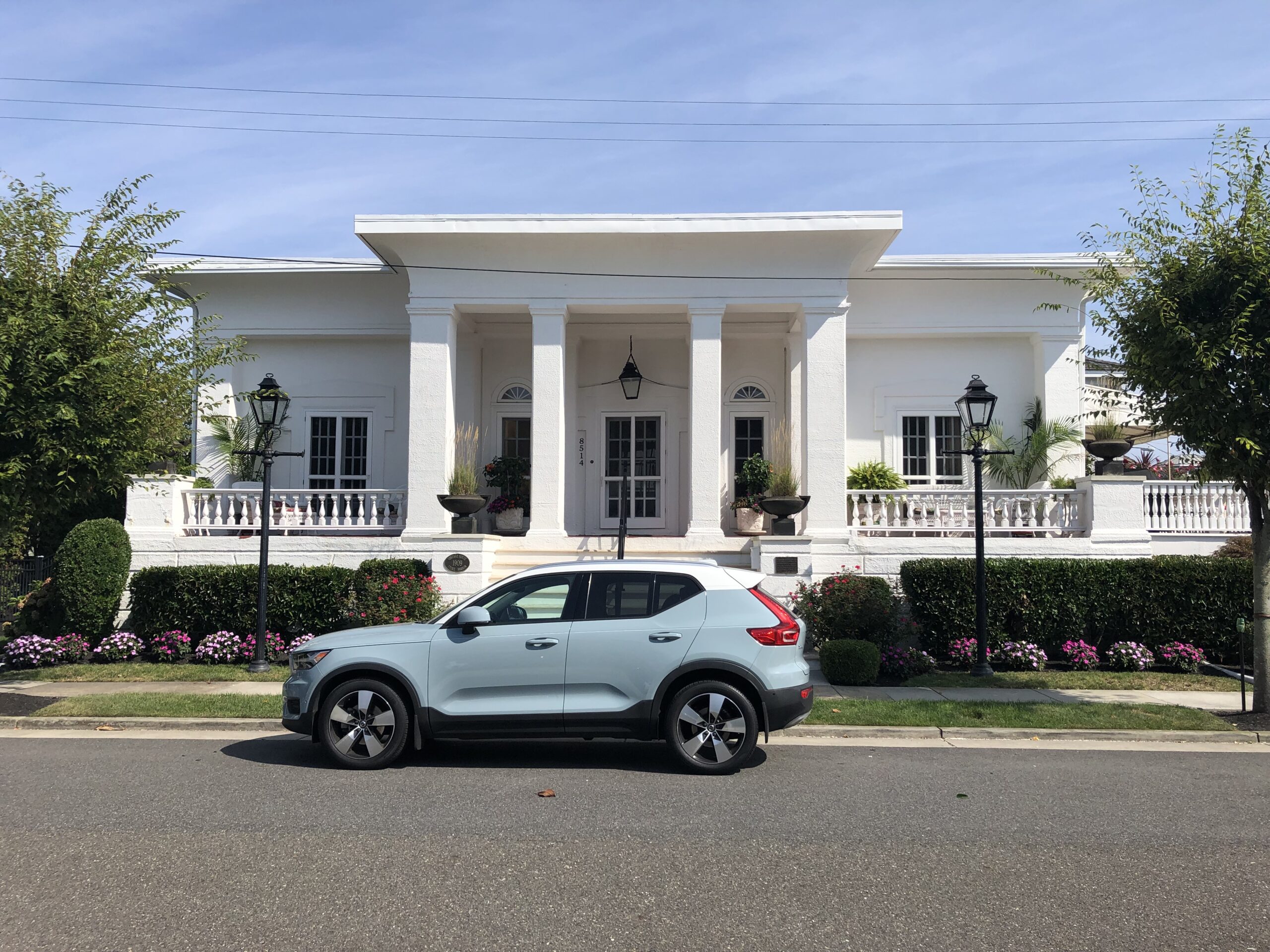
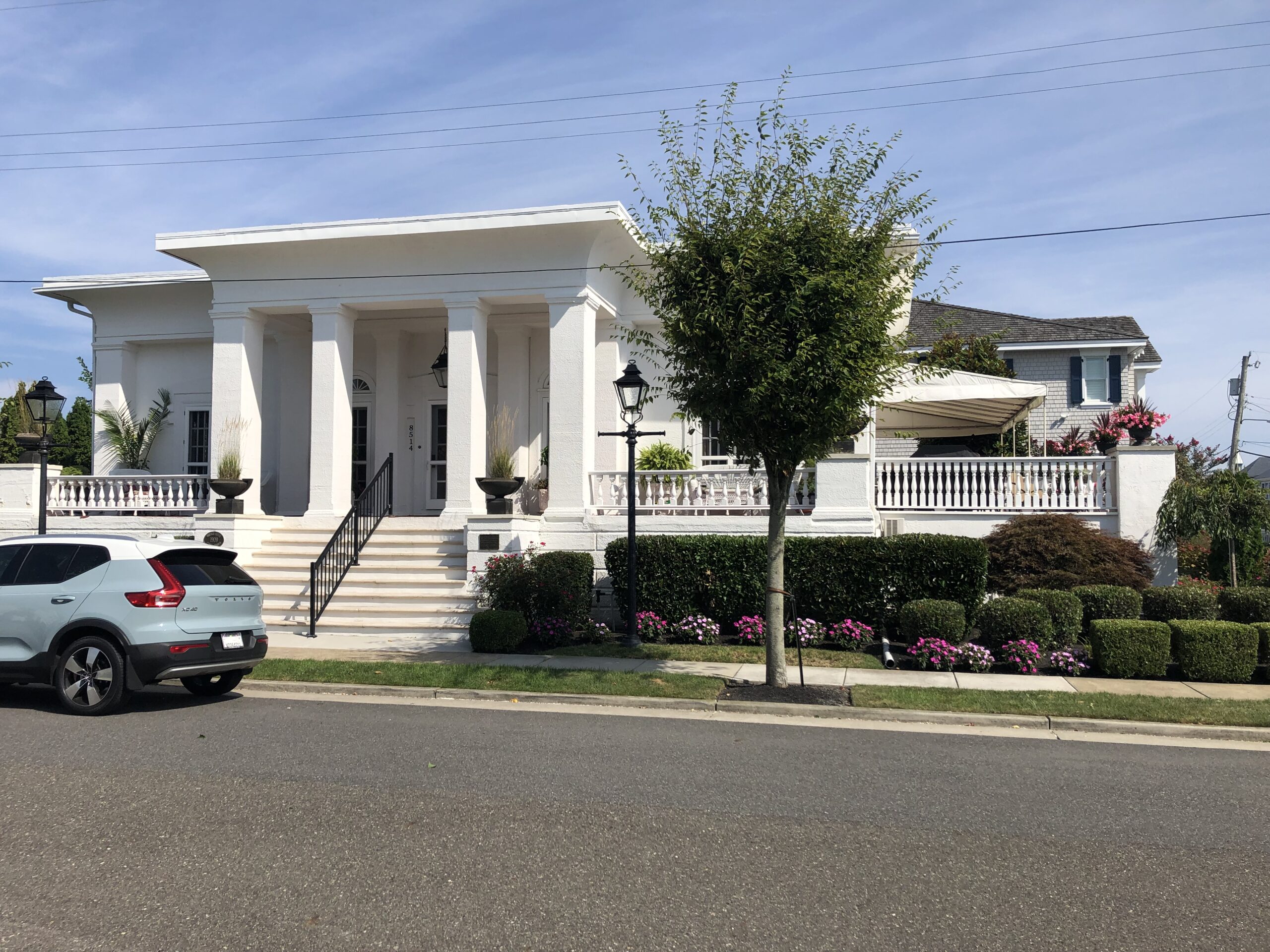
These next 2 photographs were taken by this author on a recent trip back to Stone Harbor in August of 2023. These images speak to the grandeur of this lovely and very special concrete house that is an ongoing and living part of the early history of Stone Harbor. At the age of 115 years, this house is destined to be around for many more years. We have the current owner to thank for all the fine efforts that the Joseph Moran Family have undertaken to preserve and maintain this very special property.
CONCLUSION: If you would like to hear more about the “Concrete House/White House” – home of Joe and Margie Moran – please check out the excellent Oral History recording below made at the Stone Harbor Museum on August 7, 2022.
POSTSCRIPT: Additional investigation had led this writer to append and add as a supplement to this article some related information about the other two concrete houses built in Stone Harbor.
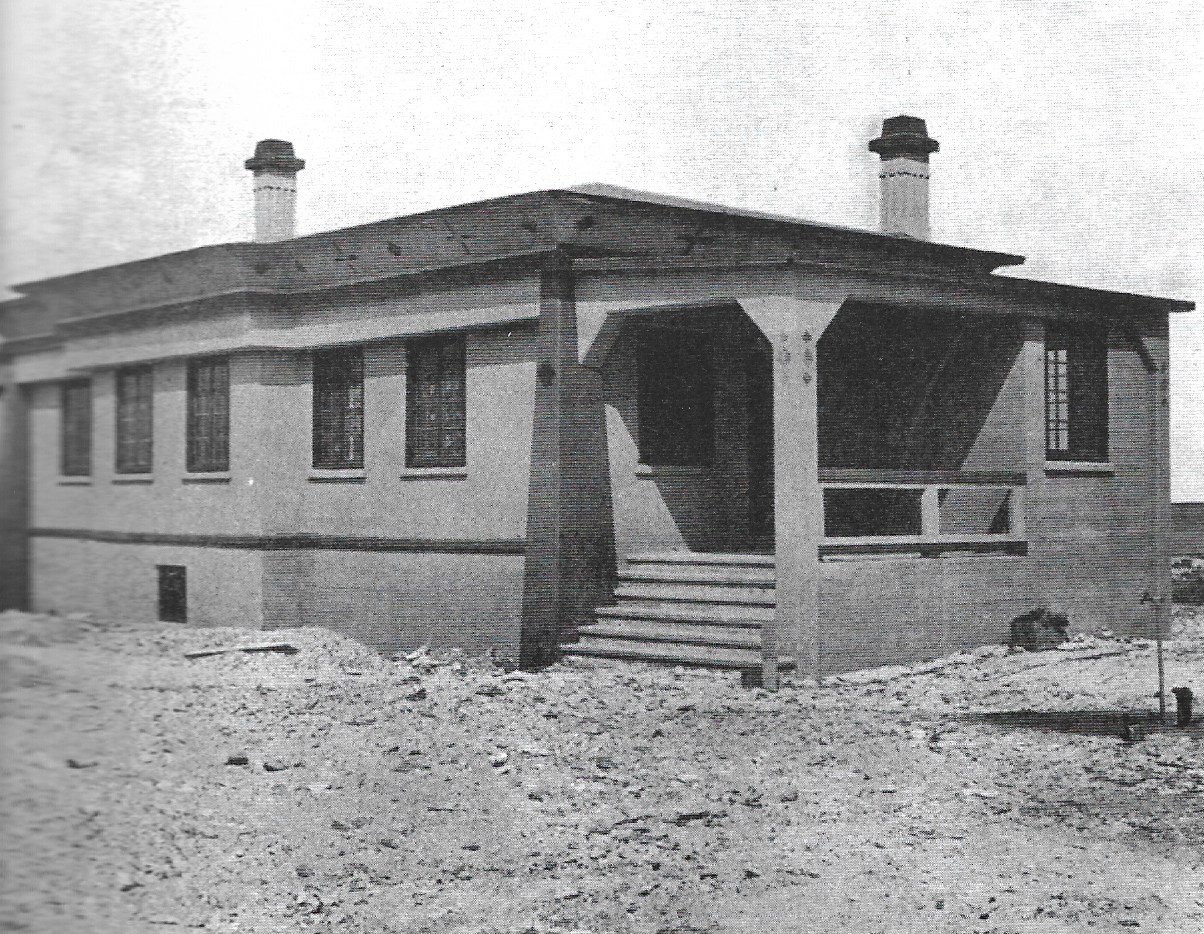
Known as the Wood’s Concrete Bungalow (see above), this second such all-concrete house was also built in the early 1900s by a Philadelphia minister named William J. Cox who was rector of the Grace Church at 41st Street and Girard Avenue. This concrete house that was situated on Sunset Drive next to what was originally called in 1910 the Stone Harbor Yacht Club, and then after a period of inactivity in 1929 became known as the Yacht Club of Stone Harbor, unfortunately, no longer stands. This particular house was built on lot 26, block 90 and consisted of 6 rooms and a bath (3 bedrooms), laundry and front and rear porches, the latter overlooking the Great Channel. In 1917 the house was advertised as being available for rent, fully furnished, for the season for $400 and/or for sale at the price of $7,000.
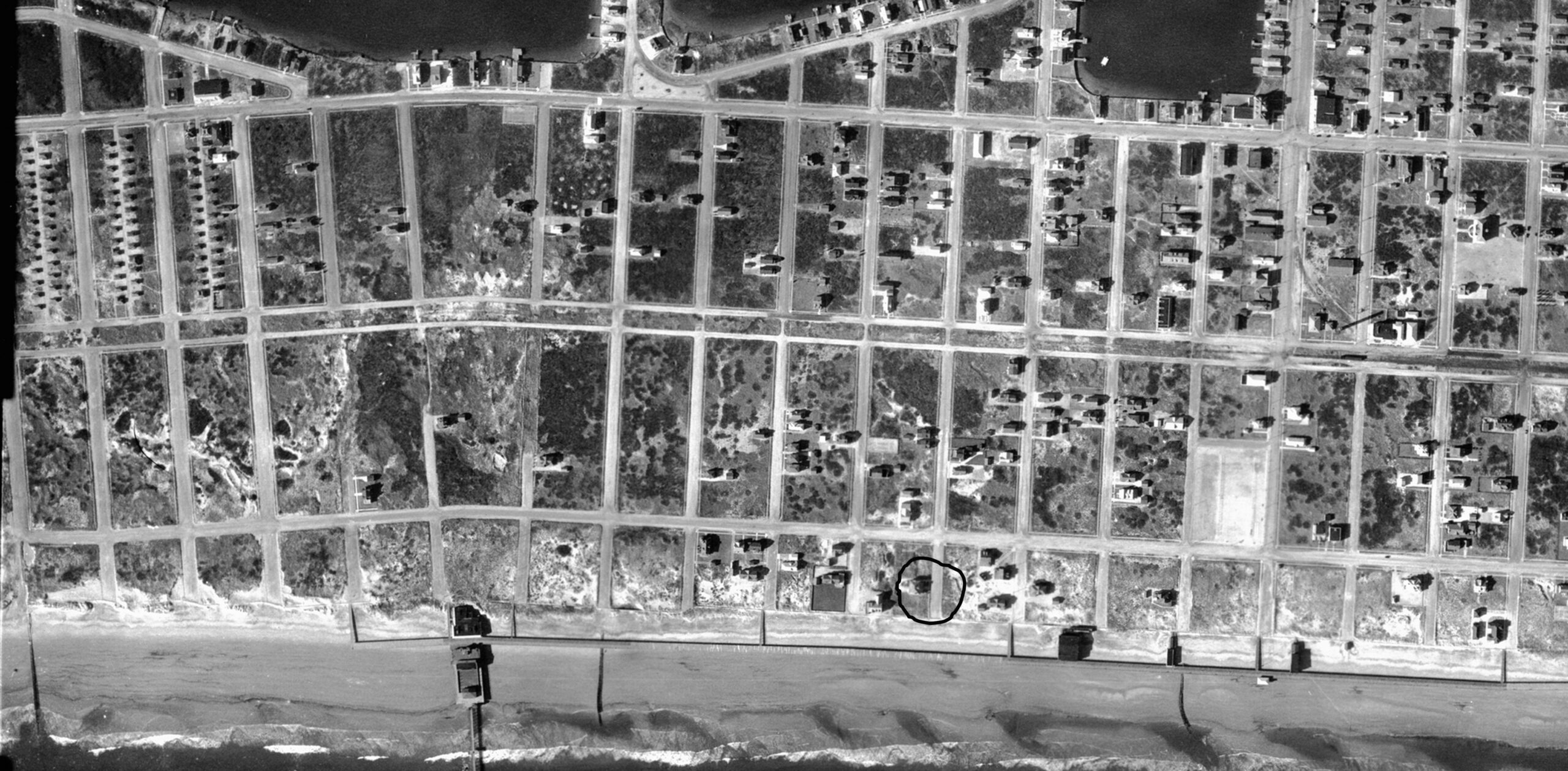

Finally, let’s turn our attention to that third concrete house built in Stone Harbor which happily we can claim does still exist. This property was built in the year 1925 and the location/mailing address is 57 100th Street between the beach and First Avenue and facing northward. The two images above will show you the actual location (see the circled areas) of this property in relation to its close proximity to the beachfront and the once prominent boardwalk. You will also see that the second of these two images is referenced with appropriate numbered street and avenue labels to help you with identifying the actual location of this particular property.
Recorded for tax purposes today, we have learned this third concrete house is listed as Single Family Residential with 4 bedrooms, 4 baths and claiming 3,016 sq. ft.

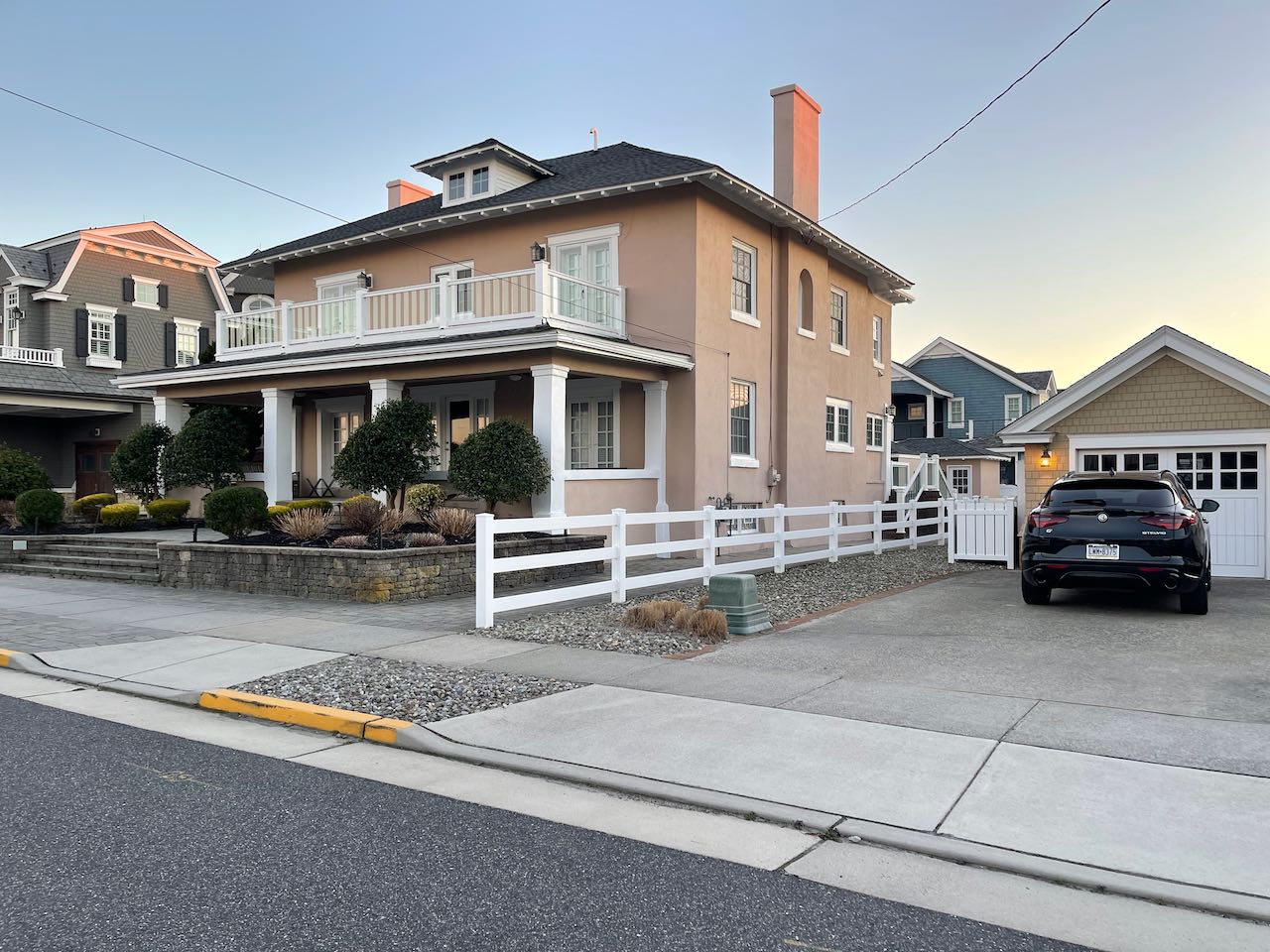
The final two somewhat recent photographs show the eastern and western exposed sides with front-on views of the third concrete house on located on 100th Street.
Well that’s a wrap as they say in show biz! I do hope you have enjoyed reading this stand-alone account and perusing these most interesting related images about the 3 concrete houses of Stone Harbor, New Jersey!
